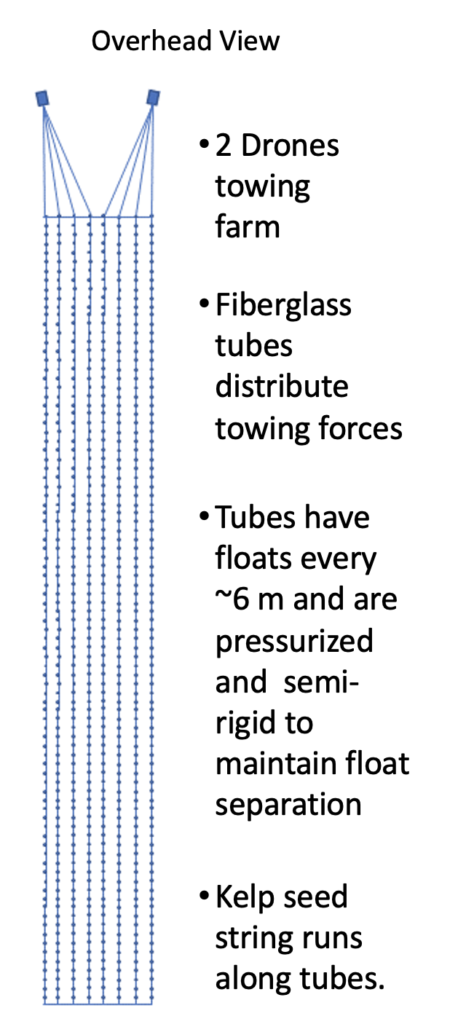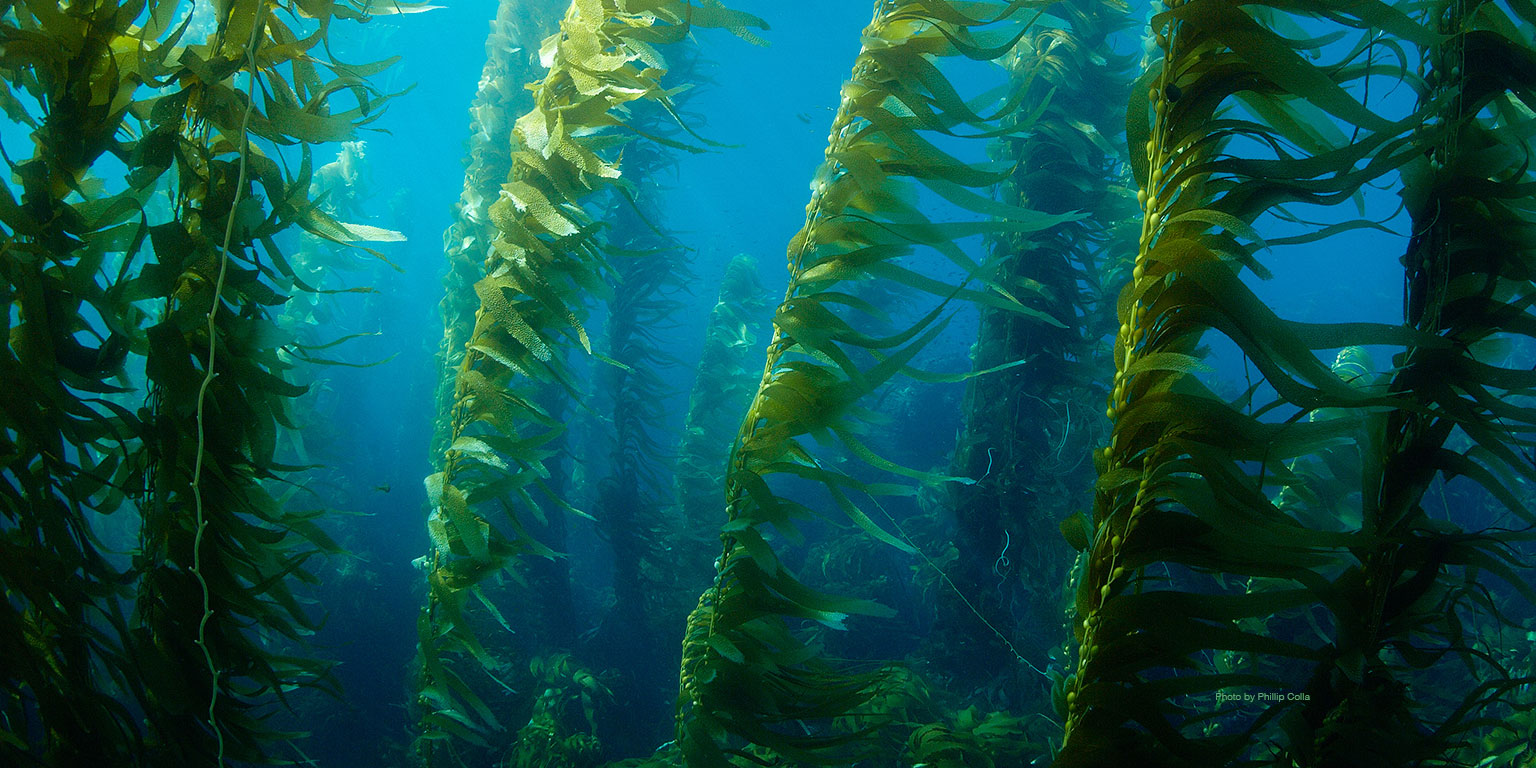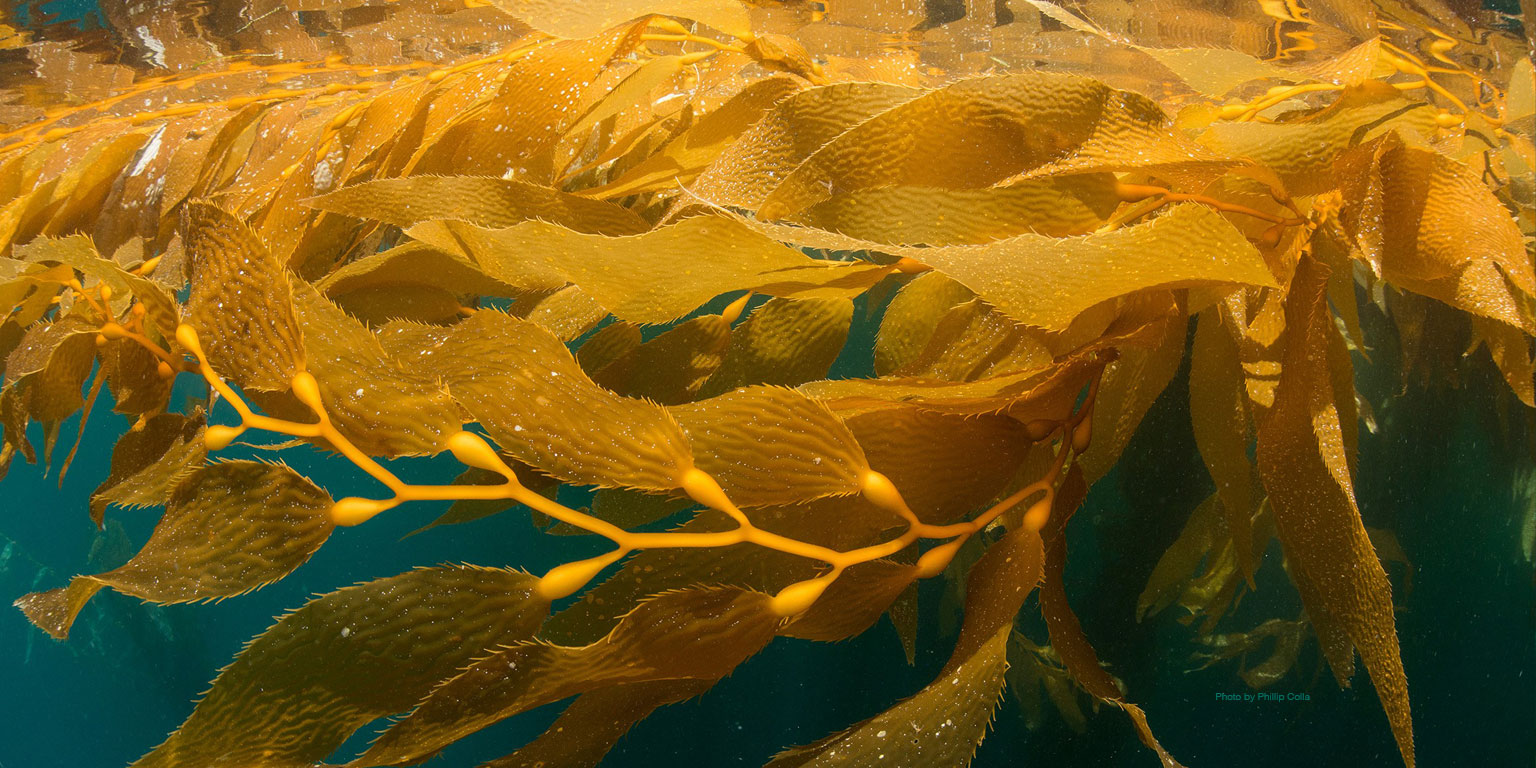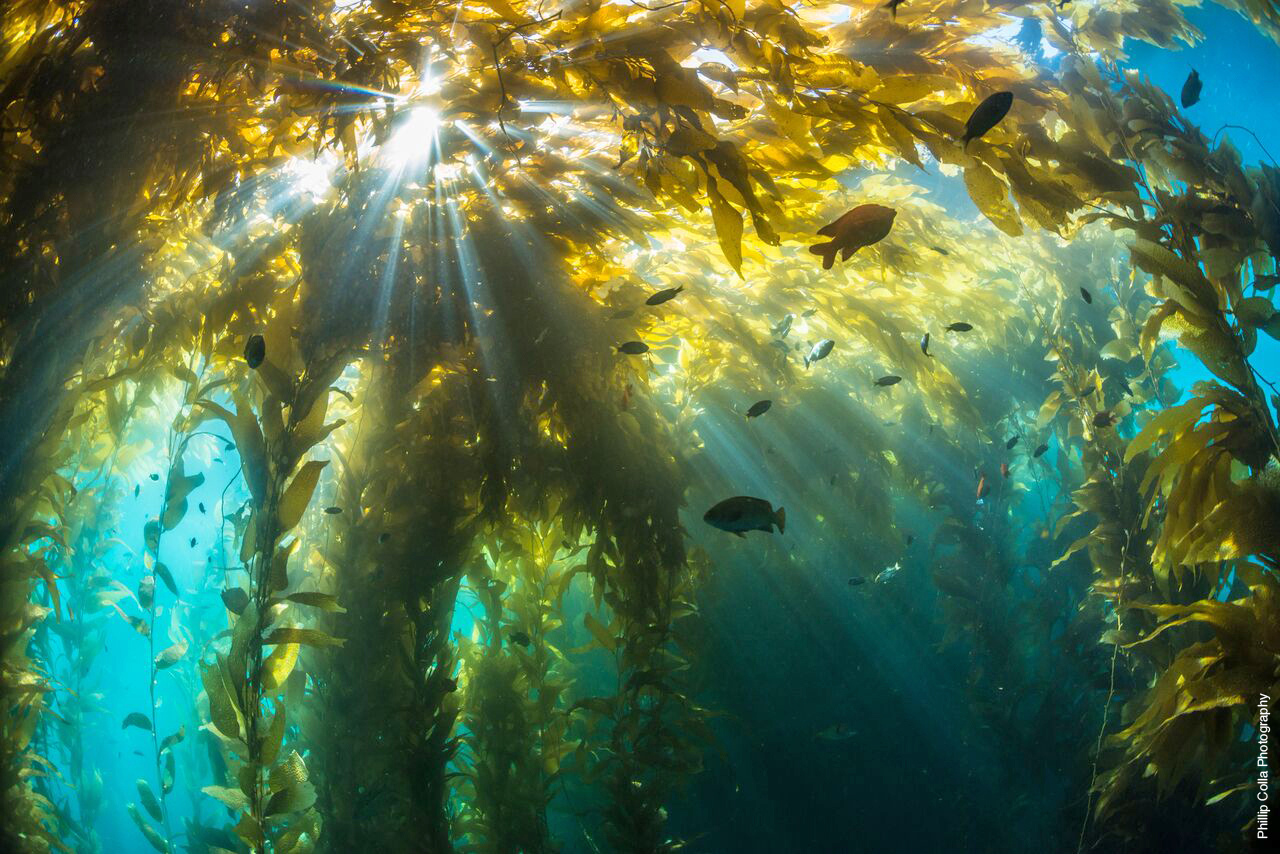Welcome to Marine BioEnergy, Inc.
Innovation
Giant Kelp (Macrocystis pyrifera) is one of the fastest growing producers of biomass. The open ocean is an immense, untapped region for collecting solar energy. Giant kelp does not grow naturally in the open ocean because kelp needs key nutrients that are available in deep ocean water or near shore but not at the surface in the open ocean. Kelp also needs an attachment at about 10-20 meters of depth. This concept proposes an economical system to access to nutrients with longlines for attachment, making it possible to farm kelp in the extensive regions of the open ocean.
If successful, this patented approach will grow kelp attached to longlines in the open ocean, each farm towed by inexpensive underwater drones. These drones will maintain the farms near the surface during the day to absorb sunlight for photosynthesis. At night, the drones will take the farms down to the deeper, cold water where the kelp can absorb nutrients that are plentiful at the thermocline and all the way to the bottom, but not adequate in the warmer surface waters. These kelp farms will also be taken to deeper water during storms or to avoid passing ships. Every three months, the drones will rendezvous the kelp farms with harvesters.

Why grow giant kelp on farms in the open ocean?
Responsible
Does not compete with food production for agricultural land, harm environmentally sensitive areas (such as deserts or marine reserves), or use fresh water, pesticides, or artificial fertilizers.
Efficient
Kelp is relatively easy to process into drop-in fuels because it has no lignin and little cellulose2. Kelp is one of the fastest-growing primary producers with elongation rates ~30 cm/day,3 and average photosynthetic efficiency in the range of 6-8%, much higher than terrestrial plant production at 1.8-2.2%.4 Kelp stores over 1 Watt/m2 (averaged 24/7/365) of sunlight as chemical energy (~2.8 kg ash-free, dry weight per m2-year), as observed in natural beds.5,6
Sustainable
Kelp continues to grow year-round, especially if adequate nutrients are available. The harvest is non-destructive so farms can be productive for years without replanting.
Why grow giant kelp on farms in the open ocean guided by underwater drones?
Protect Coastlines
Near-shore areas with natural upwelling of nutrients won’t produce enough biomass to make a significant impact on the nation’s energy needs. Many natural kelp beds are in marine reserves, or in recreational or commercial areas.
Cost
The underwater drones will be less expensive than one might expect because they will use numerous subsystems that are already available in production quantities (automated guidance & control, communications, batteries, pumps, sensors).
Sufficient Space
Kelp grown in the open ocean can utilize massive open ocean areas to supply an energy feedstock sufficient for the projected peak world population at the current U.S. per capita rate of energy consumption of ~9500W/person.
The Pacific Ocean offshore of the Western U.S. represents an immense, untapped solar collecting area and, if this effort is successful, will be the first deployment region for the commercial farm systems. Fast-growing kelp produces biomass year round and could provide a transformational solution to the need for millions of tons of feedstock per year.
ANIMATION OF AN OCEAN FARM DEPTH-CYCLING
Short animation showing a drone towing a longline of kelp.



